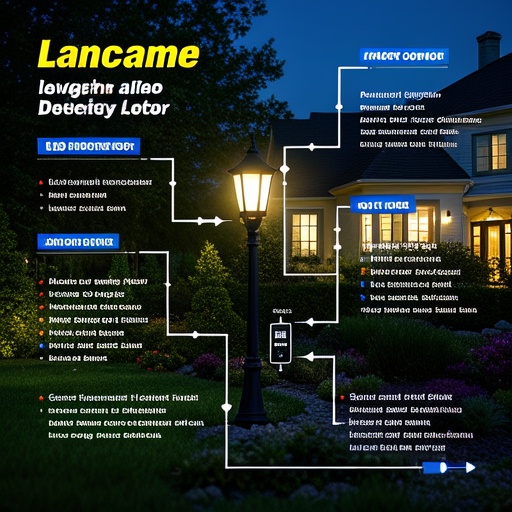Analyzing LandscapeLightPowerSupply, the core technology of landscape lighting
Landscape lighting has the power to transform outdoor spaces, enhancing aesthetics, security, and functionality after dark. At the heart of any successful landscape lighting project lies a reliable and efficient power supply system. This article delves into the core technology of landscape light power supply, exploring its components, innovations, and considerations for optimal performance.
The Importance of a Solid Power Supply
A robust power supply is fundamental to ensuring that landscape lights operate consistently and effectively. It serves as the backbone that powers various lighting fixtures scattered across gardens, pathways, architectural features, and recreational areas. Without a dependable power source, even the most elegantly designed lighting scheme can fall short of its intended impact.

Components of a Landscape Lighting Power Supply System
1. Transformers: Step-down transformers are essential for converting the high voltage from a building's electrical supply to a safer, lower voltage suitable for outdoor lighting fixtures. These transformers must be properly sized based on the total wattage of the connected lights to prevent overheating and ensure efficient operation.
2. Cables and Wiring: High-quality, weather-resistant cables protect against moisture, UV rays, and temperature extremes. Proper wiring ensures minimal energy loss and reduces the risk of short circuits or fire hazards.
3. Circuit Breakers and Fuses: Safety mechanisms like circuit breakers and fuses safeguard the system from overloads and electrical faults, preventing damage to both the lighting equipment and the property's electrical infrastructure.
Innovations in Landscape Lighting Power Supply
Advancements in technology have led to significant improvements in landscape lighting power supplies:
1. LED Technology: Light Emitting Diodes (LEDs) have revolutionized landscape lighting due to their energy efficiency, long lifespan, and versatility. LED fixtures consume less power while delivering bright, focused light, making them an ideal choice for environmentally conscious projects.
2. Smart Control Systems: Integration with smart home technology allows for remote control, scheduling, and automation of landscape lighting. Sensors can detect motion, ambient light levels, or even adjust colors based on user preferences, enhancing convenience and security.
3. Solar-Powered Solutions: Harnessing solar energy provides a renewable and cost-effective alternative to traditional electrical supplies. Solar-powered landscape lights reduce reliance on grid electricity, contributing to sustainability efforts and offering easy installation in remote areas.
Energy Efficiency and Sustainability
Energy efficiency is a critical consideration in landscape lighting, not only to minimize operational costs but also to reduce environmental impact. Implementing energy-efficient practices such as using LED灯具, dimming capabilities, and motion sensors can significantly cut down energy consumption without compromising on illumination quality. Additionally, selecting fixtures with high Color Rendering Index (CRI) ensures natural-looking colors, enhancing the visual appeal of landscapes.
Sustainability extends beyond energy efficiency; it also involves responsible material selection and end-of-life disposal strategies. Opting for recyclable materials and designing for easy maintenance and upgradeability contributes to a more eco-friendly lighting solution.
Design Considerations
When designing a landscape lighting power supply system, several factors should be taken into account:
- Load Calculation: Accurate calculation of the total wattage required ensures the correct sizing of transformers and cables.
- Voltage Drop: Minimizing voltage drop across long cable runs maintains consistent light output and prevents flickering.
- Zoning: Dividing the landscape into zones based on usage patterns allows for targeted lighting and simplifies control.
- Compliance with Codes: Adherence to local electrical codes and standards guarantees safety and legality.
In conclusion, the core technology of landscape light power supply encompasses a blend of traditional electrical engineering and modern innovations. By understanding the components, embracing energy-efficient solutions, and integrating smart controls, designers and installers can create stunning yet sustainable outdoor lighting environments. As technology continues to evolve, so too will the possibilities for illuminating our nighttime landscapes, making them safer, more inviting, and environmentally friendly.
 In heritage architecture prote
In heritage architecture prote
 When small-batch customization
When small-batch customization
 Have the electromagnetic emiss
Have the electromagnetic emiss
 When Triac dimmable power supp
When Triac dimmable power supp
